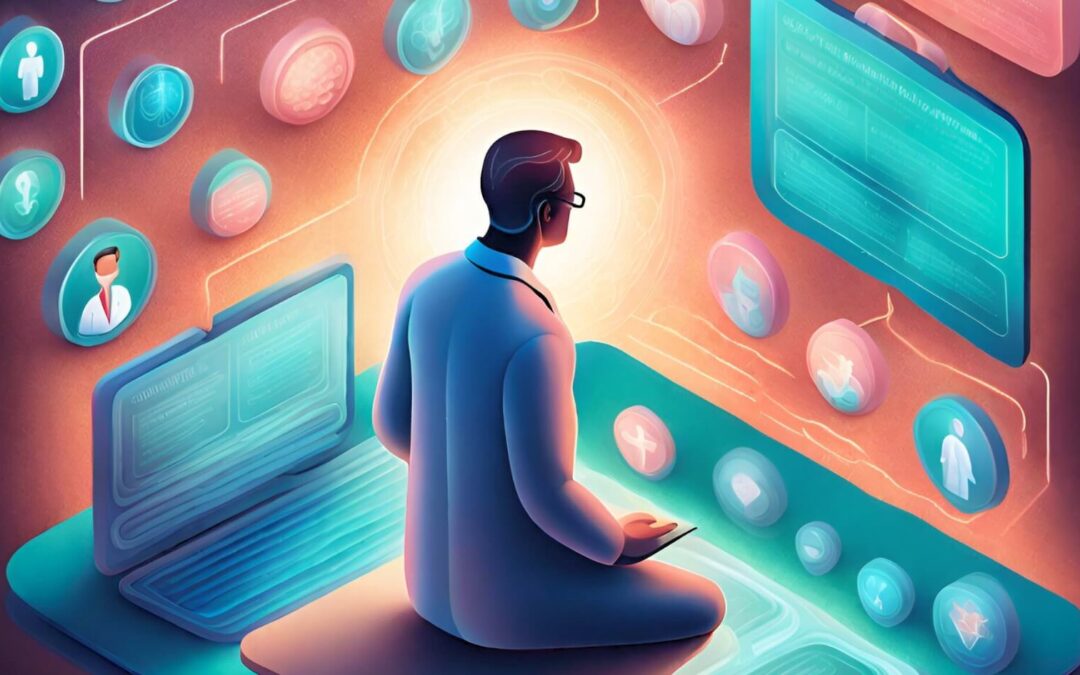In healthcare, the time and money invested to train staff to use and manage patient data within Electronic Health Records systems is tremendous.
EHRs can potentially improve patient care but also present significant challenges, particularly in training healthcare professionals to utilize these tools efficiently.
According to Amanda Parsons, M.D., M.B.A., “…transitioning to an EHR is like agreeing to be a triathlete—it’s ultimately great for you, but you have to commit to serious and ongoing training.”
In this post, I’ll cover common pitfalls of traditional training methods and explore innovative tools like Hermann that drastically improve corporate learning and retention for healthcare professionals.

The Limitations of Traditional Formal Training
One of the primary bottlenecks in healthcare training is the inadequacy of traditional methods.
Many professionals, seasoned and just entering their fields, grapple with outdated training approaches that fail to meet their needs. With its fixed schedules and theoretical orientation, the conventional classroom setting often fails to provide practical, application-oriented learning experiences that allow learners to apply their skills.
Traditional training methods struggle to accommodate individuals’ diverse learning speeds and preferences. This one-size-fits-all approach leaves many learners frustrated and disengaged, ultimately hindering their ability to absorb and apply essential knowledge.
And as we’ll see—even if the format aligns with the learned temperament, students will forget most of the material in a classroom setting.
The 70-20-10 Model: A Paradigm Shift in Training
To address these challenges, organizations must embrace a paradigm shift in their approach to training.
The 70-20-10 model offers a compelling framework for designing more dynamic and effective learning experiences. This model emphasizes the importance of experiential learning (70%), exposure to peers (20%), and formal training (10%) in driving professional development.
By prioritizing hands-on experience and peer interaction, healthcare organizations can create a more engaging and impactful learning environment. Employees gain valuable insights by applying newly acquired knowledge directly to their roles and leveraging the expertise of their colleagues.
The Forgetting Curve: A Barrier to Learning
The 70-20-10 model is a step in the right direction, but no matter how brilliantly designed the course material is, it still runs up against a hard wall: The Forgetting Curve.
Research shows that without proper reinforcement, learners forget up to 90% of newly acquired information within a week. This underscores the urgent need for strategies to enhance knowledge retention and application. What is alarming about this statistic is that science proves that most training budgets are wasted on expensive and ineffective training programs.
So, how does an organization design course material to overcome the forgetting curve and ensure high retention levels of the material?
Innovative Solutions for Effective Corporate Training
To overcome the forgetting curve and maximize learning outcomes, healthcare organizations must adopt innovative training solutions. Three key strategies stand out:
Spaced Repetition: Breaks down information into smaller doses and reinforces it over time, which can significantly improve retention. By recalling information frequently, learners deepen their understanding and retain knowledge more effectively.
Microlearning: Delivering content in bite-sized nuggets allows learners to focus on specific topics and absorb information more efficiently. Microlearning complements spaced repetition by providing short, targeted learning experiences that promote retention and application.
Mobile-Friendly Delivery: Training content must be accessible across multiple devices to accommodate diverse learning preferences. Mobile-friendly platforms ensure employees can engage with training materials anytime, anywhere, enhancing flexibility and convenience.
Harnessing Technology for Enhanced Learning
Innovative technologies such as Hermann offer a comprehensive solution for healthcare organizations seeking to enhance their training programs. By integrating spaced repetition and microlearning into a user-friendly platform, Hermann enables organizations to deliver personalized and engaging training experiences to help employees maximize their EHR.
By harnessing the power of technology, organizations can empower their employees to acquire and retain essential knowledge, driving improved patient outcomes and organizational success.
Final Thoughts
By recognizing the limitations of traditional approaches and embracing innovative solutions, organizations can empower their workforce to thrive in an increasingly complex and dynamic environment.
Training courses designed by industry experts and paired with tools like Hermann or a winning combination for better performance for physicians and administrators alike.
Contact me for a strategy session if you want to get the most out of your corporate training.
Blog
Join the Get Anything Done Newsletter
Productivity Strategies to Improve Your Daily Process

